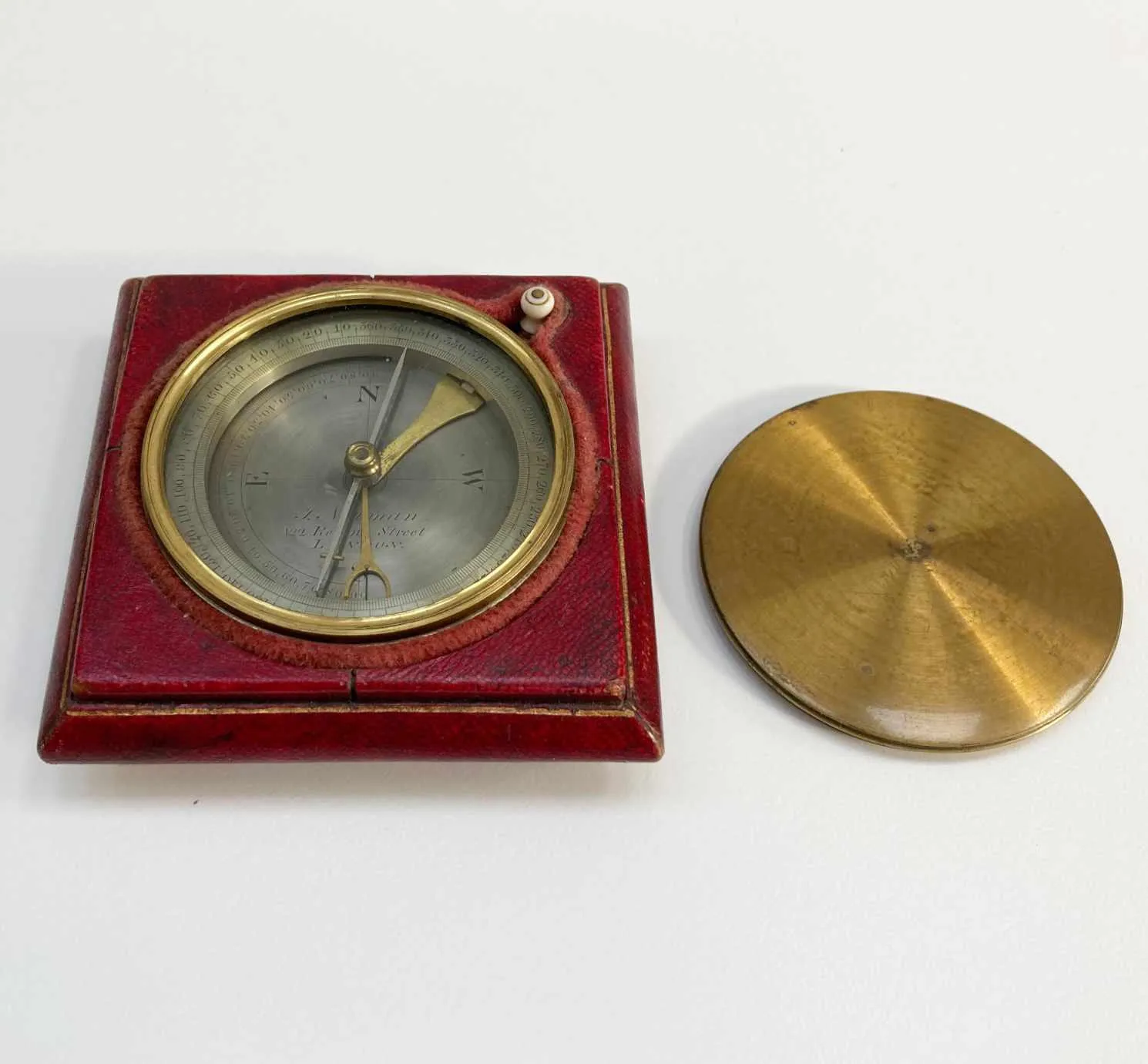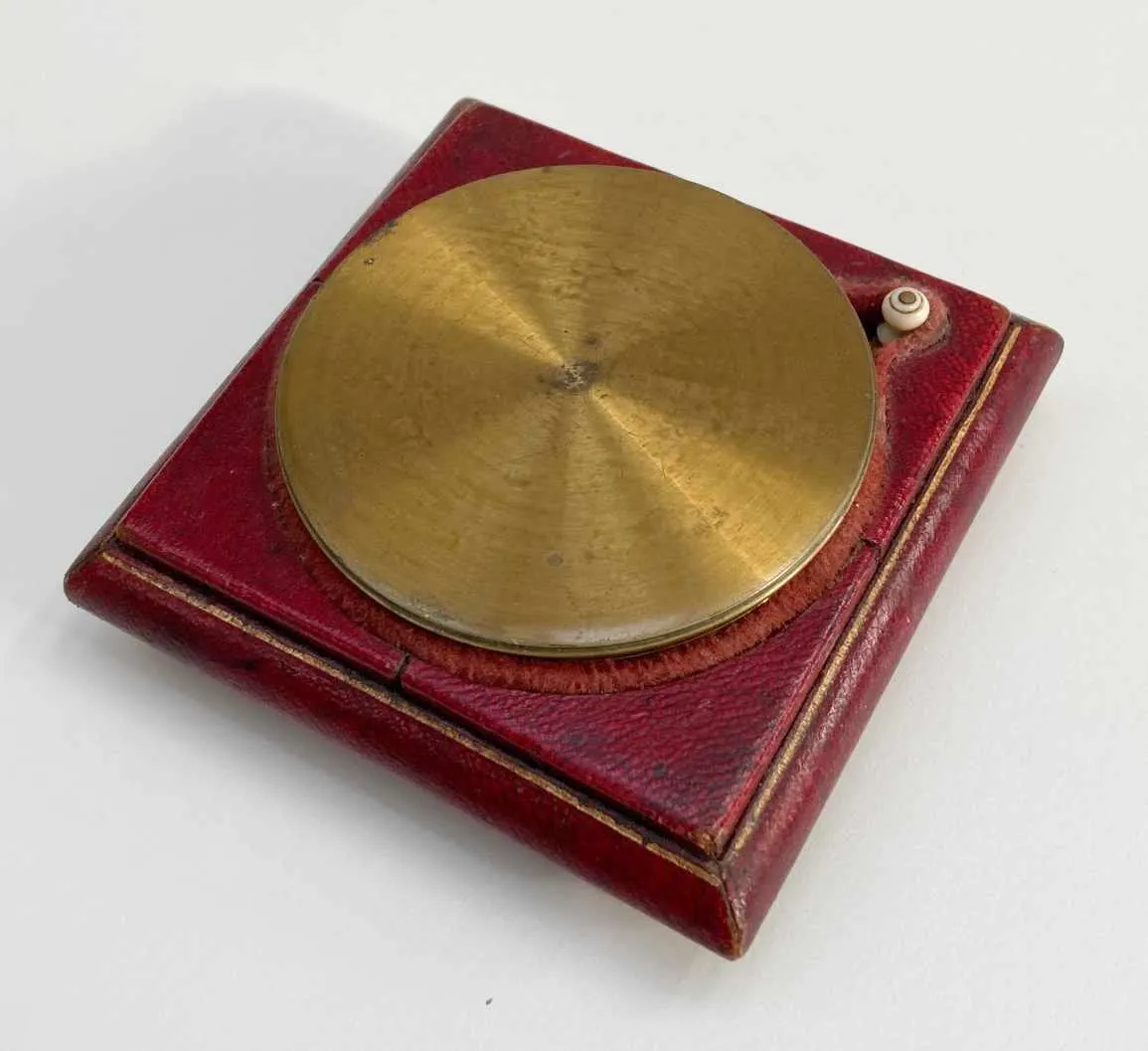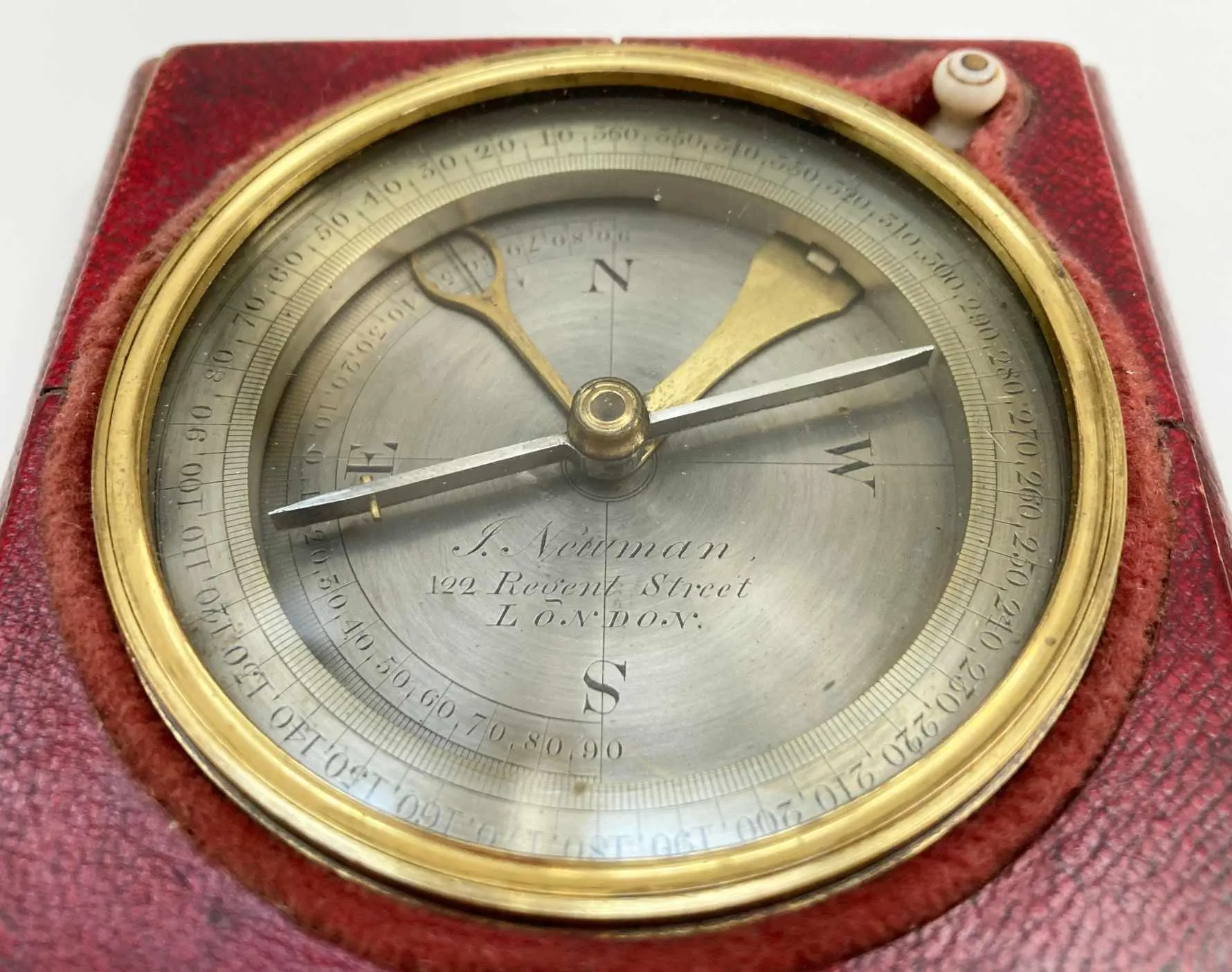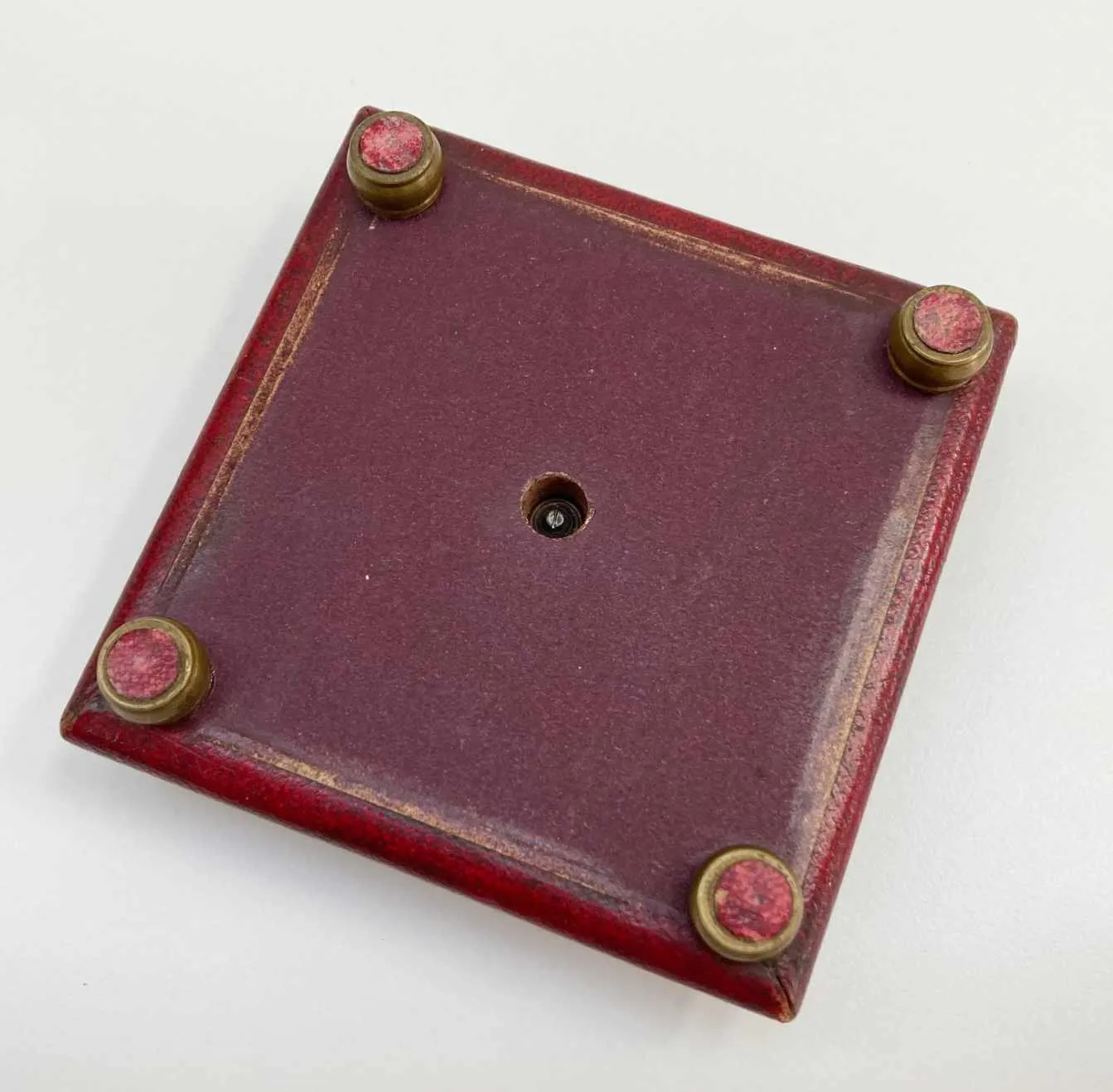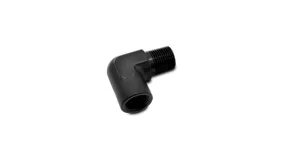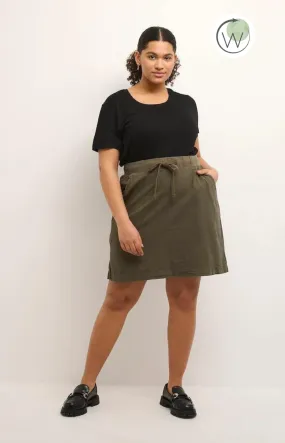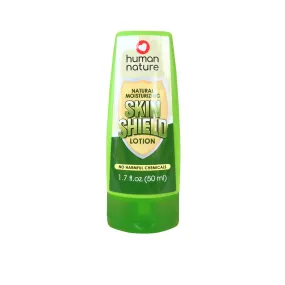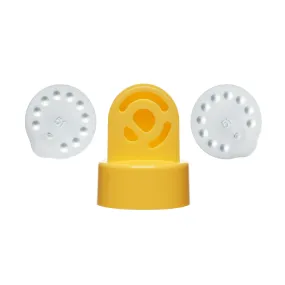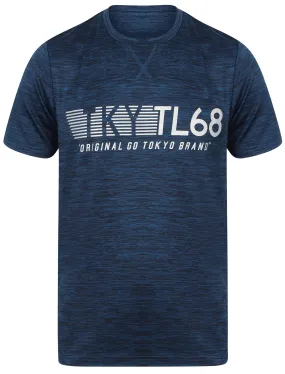For sale, a William IV desk compass with inclinometer by John Newman of 122 Regent Street, London.
A truly magnificent example contained within a graduated morocco and gilt tooled leather covered surround which sits upon four turned brass feet. As a mark of care and quality, each foot is fitted with a small leather pad to the base to avoid marking the furniture!
The compass dial is fitted with a turned brass lid to ensure its protection which reveals an astonishingly good and graduated compass dial. The very robust outer ring is minutely engraved to 360 degrees whilst the lower dial is marked with the compass points. The eastern half of the lower dial is further graduated from 0 – 90 degrees from east to north and from east to south to incorporate an inclinometer which swings freely below the compass needle. The southern half of the dial is engraved with the maker’s name, “J. Newman, 122 Regent St, London”.
The compass fits snugly into its base with a red velvet liner surrounding its circumference and with a small finger push to the north-west point to allow the needle to be locked when in transit. A small screw at the base of the case also allows for adjustment to the needle height.
A simply stunning example by a significant maker from the period. Perhaps a little impractical as a portable instrument but its quality and unusual design is evident throughout.
Newman is somewhat understated, he rarely figures amongst the best makers of the period and his history is somewhat less well known than his early Nineteenth Century counterparts however, he was a hugely respected figure during his time. Born in 1783, both he and presumably his brother George Newman were apprenticed to Philip Brock although there is also some association with a Robert Tangate to whom one or both may have been turned over to during this time. Tangate had previously been apprenticed to George Adams of Fleet Street so their education would have been of the highest quality.
Other Newmans of the period seem also to have some relationship with John but it is hard to unravel. This branch of the family were ultimately apprenticed through Tyco Wing who under Thomas Heath had been in turn apprenticed alongside George Adams and Troughton amongst other notable characters. A Thomas Newan also eventually took over the Heath & Wing business. The commonality of names seem too obvious to ignore but would need some further specific research.
John Newman gained his freedom in 1807 and traded initially from his birthplace in Camberwell, moving to Lisle Street in Leicester Square in 1812 from where he continued to trade until 1827 and from there undertook laboratory work, chemical supply and manufacture for The Royal Institution where he associated himself with numerous leading scientists of the age. Prior to his departure from this address, he was commissioned by the Royal Society to create a standard barometer which was perhaps one of his most successful and well known products used by numerous observatories for its pin-point accuracy. Later, in 1824 he provided instruments for Rear-Admiral Parry’s voyage to find the North West passage.
Regent Street was newly built in 1827 when Newman secured his premises at number 122 proving a significant rise in success during this period and he remained at this address until his death. Whilst trading from these premises, he served the likes of Charles Darwin for whom he made a portable mountain barometer to take with him on HMS Beagle, he manufactured instruments for the Ross Expedition and for the scientist, Sir Charles Wheatstone. Newman was also an exhibitor at The Great Exhibition where he gained special mention for his air pumps
He finally relinquished his position as instrument maker to The Royal Institution in the early months of 1860 and died in July of the same year. The business was sold by his son to the recently established Negretti & Zambra who took over the premises at 122 Regent Street and immediately made it their flagship London store.
The legacy of Newman’s work was continued by his apprentices Robert Murray and Charles Elliott. The former worked for Newman for most of his career until he finally departed to form Murray & Heath. This company specialised in photography which is perhaps unsurprising given that the upstairs premises at Regent Street contained a photographic studion run by Alexander Bassano and was frequented by Fox-Talbot during Murray’s career.
Charles Elliott needs little introduction, he left Newmans emply to join his Father’s business, William Elliott & Sons and later became one half of the hugely renowned, Elliott Brothers of The Strand.
Circa 1830




